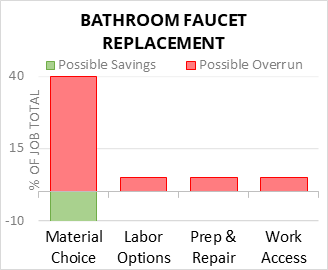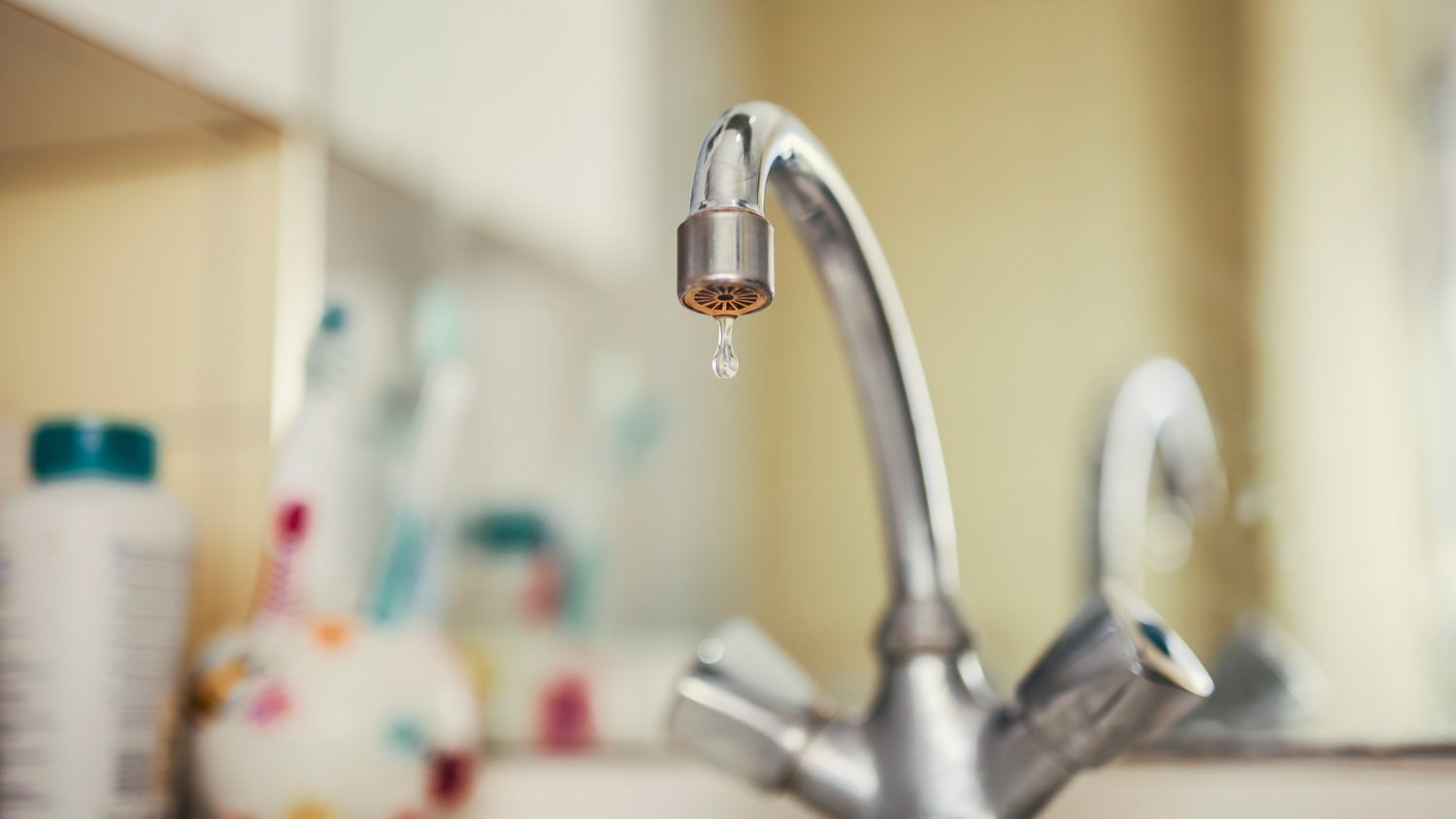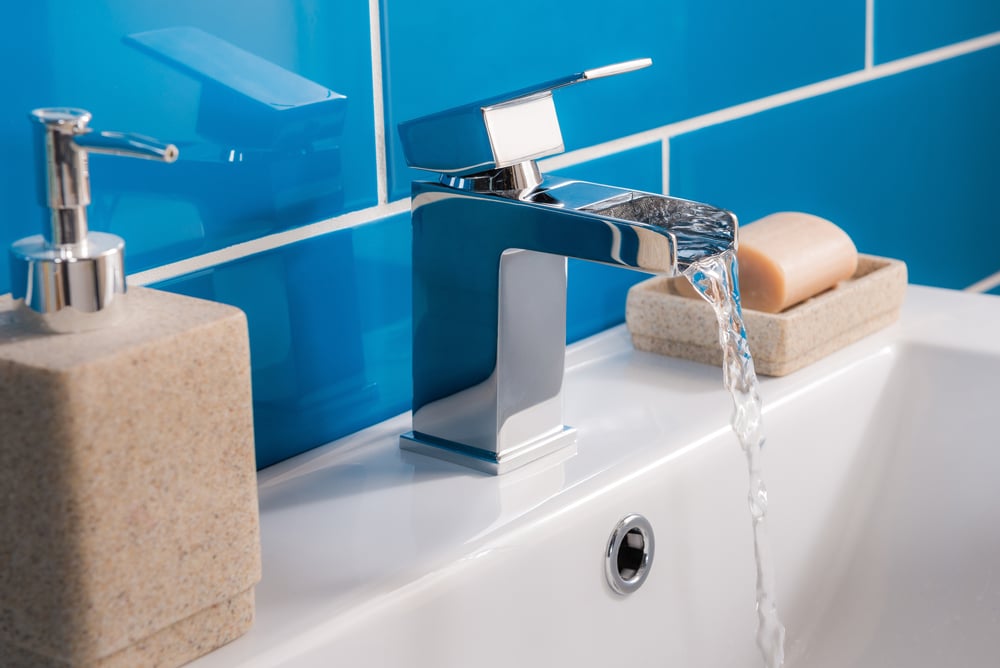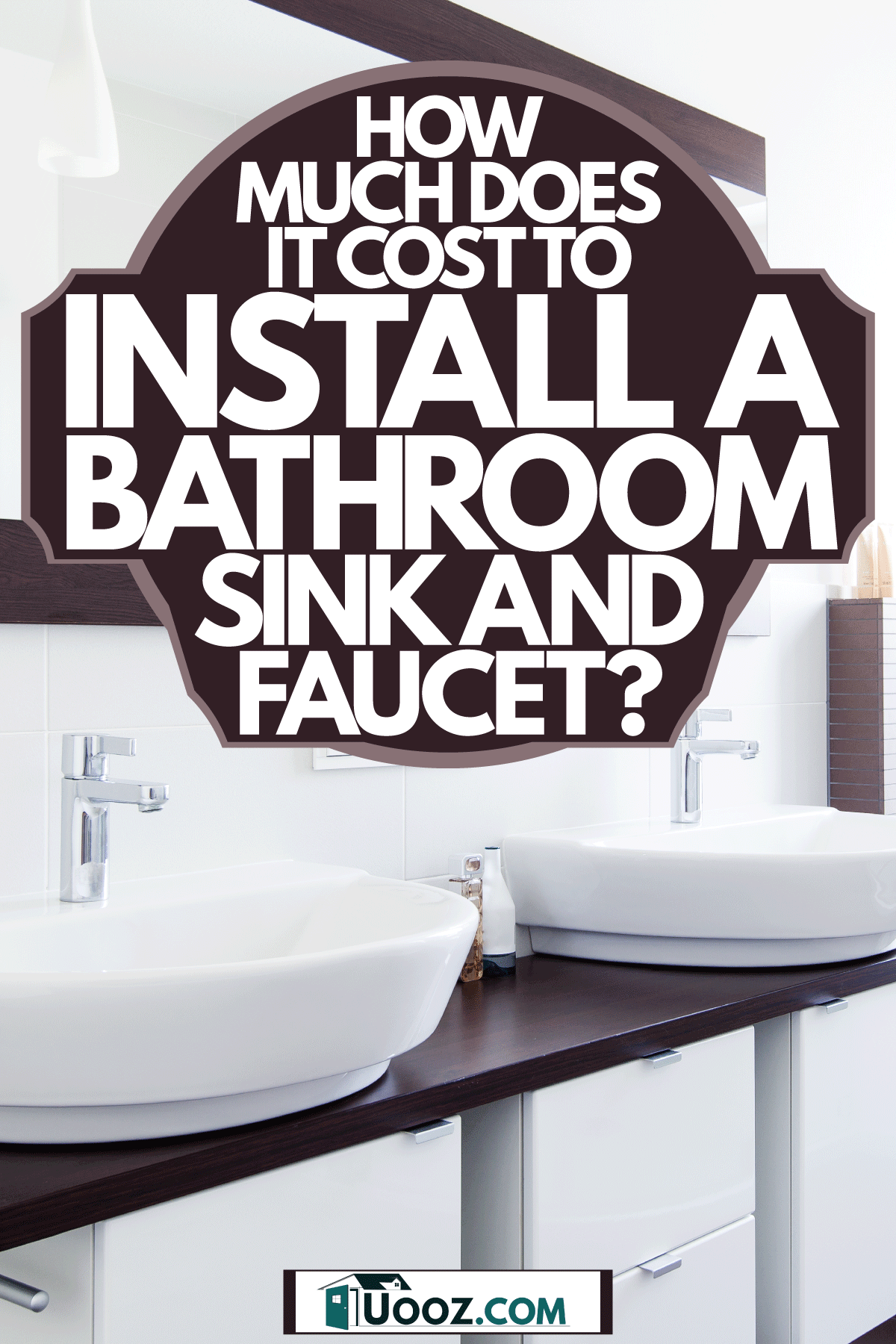Factors That Influence Faucet Replacement Costs
Replacing a faucet in your bathroom is a common home improvement project that can enhance the aesthetics and functionality of the space. However, the cost of faucet replacement can vary depending on several factors. Understanding these factors can help you budget for your project effectively and make informed decisions about which options are right for you. Here are some factors that influence faucet replacement costs:
- Type of Faucet: The type of faucet you choose will have a significant impact on the overall cost of replacement. Basic faucets with standard features tend to be more affordable, while high-end or specialty faucets with advanced technology or intricate designs can be more expensive. Common types of bathroom faucets include single-handle, double-handle, wall-mounted, and touchless faucets, each with its price range.
- Material and Finish: Faucets come in a variety of materials and finishes, ranging from chrome and stainless steel to brass and bronze. The material and finish you select can affect both the cost and durability of the faucet. While chrome is typically the most affordable option, brass, and bronze tend to be more expensive but offer greater longevity and resistance to corrosion. Additionally, specialty finishes such as brushed nickel or oil-rubbed bronze may come at a premium price.
- Brand and Quality: Like most products, faucets are available in a range of quality levels from various brands. Higher-end brands often command higher prices due to their reputation for superior craftsmanship, innovative features, and durable materials. While opting for a reputable brand can ensure a higher-quality product, it may also come with a higher price tag. However, investing in a well-made faucet from a trusted brand can pay off in the long run by reducing the need for repairs or replacements down the line.
- Installation Requirements: The complexity of the installation process can also influence faucet replacement costs. In some cases, replacing a faucet may be a straightforward DIY project that requires minimal tools and skills. However, if the installation requires additional plumbing work, such as replacing old pipes or modifying the sink configuration, the cost may increase significantly. Hiring a professional plumber to handle complex installations can ensure the job is done correctly and may be worth the added expense for peace of mind.
- Additional Features: Faucets with additional features or advanced technology may come with a higher price tag. For example, touchless faucets equipped with motion sensors or smart faucets with temperature control and programmable settings tend to be more expensive than standard models. While these features can enhance convenience and efficiency, they may also add to the overall cost of replacement. Consider whether the added benefits justify the higher price when selecting a faucet for your bathroom.
- Warranty Coverage: Finally, warranty coverage can affect the overall cost of faucet replacement by providing added protection against defects or malfunctions. Faucets with longer warranty periods or comprehensive coverage may have a higher upfront cost but can save you money in the long run by reducing the need for repairs or replacements out of pocket. Be sure to inquire about warranty options when purchasing a new faucet and factor any additional costs into your budget.
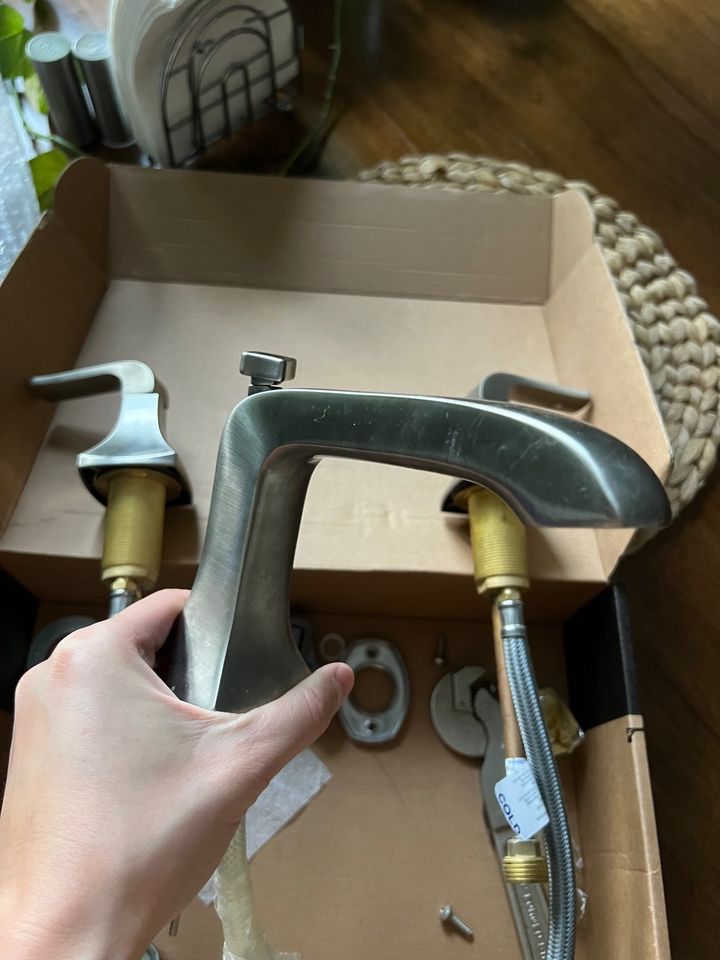
Labor Costs for Professional Installation
While some homeowners may opt to replace a bathroom faucet themselves as a DIY project, others prefer to hire a professional plumber for installation. While DIY installation can save money on labor costs, hiring a plumber ensures the job is done correctly and efficiently. However, the professional installation comes with its own set of costs that should be considered when budgeting for a faucet replacement. Here’s what you need to know about labor costs for professional faucet installation:
Hourly Rates: Professional plumbers typically charge by the hour for their services, with rates varying depending on factors such as location, experience, and the complexity of the job. On average, plumbers may charge anywhere from $50 to $150 per hour for faucet installation, with additional fees for overtime, emergency services, or travel outside of their service area. Keep in mind that these rates may fluctuate based on market demand and other economic factors.
Flat Fees: In some cases, plumbers may offer flat fees for specific plumbing services, including faucet installation. This means you’ll pay a predetermined amount for the job regardless of how long it takes. Flat fees can provide greater transparency and predictability in pricing, allowing you to budget more effectively for your project. However, be sure to inquire about any additional charges or hidden fees that may apply.
Cost Factors: Several factors can influence the overall cost of professional faucet installation, including the complexity of the job, accessibility of the plumbing fixtures, and the need for additional materials or services. For example, replacing a basic faucet on a standard sink may be relatively straightforward and inexpensive, while installing a high-end faucet with advanced features or modifying the plumbing system may require more time and expertise, resulting in higher labor costs.
Estimates and Quotes: Before hiring a plumber for faucet installation, it’s essential to obtain estimates or quotes from multiple contractors to compare pricing and services. Ask for detailed breakdowns of labor costs, material costs, and any additional fees or expenses to ensure you understand what’s included in the quote. Additionally, inquire about the plumber’s credentials, experience, and warranty coverage to ensure you’re hiring a reputable professional for the job.
Warranty and Guarantees: When hiring a plumber for faucet installation, inquire about warranty coverage and guarantees for their workmanship. Reputable plumbers should stand behind their services and offer warranties on labor and parts to provide added peace of mind. Be sure to review the terms and conditions of the warranty carefully and ask any questions you may have before proceeding with the installation.
DIY vs. Professional Installation: Ultimately, the decision to hire a professional plumber for faucet installation comes down to your personal preferences, budget, and level of expertise. While DIY installation may save money on labor costs, it requires time, tools, and technical skills that not all homeowners possess. Hiring a plumber ensures the job is done correctly the first time and can save you time, frustration, and potential headaches down the line.
Costs of Faucet Fixtures and Materials
When replacing a bathroom faucet, the cost of the fixtures and materials is a significant factor to consider in your budgeting process. Faucet prices can vary widely depending on factors such as the type of faucet, material and finish, brand and quality, and additional features. By understanding the costs associated with faucet fixtures and materials, you can make informed decisions about which options are right for your needs and budget. Here’s what you need to know about the costs of faucet fixtures and materials:
Basic Faucets: Basic faucets with standard features and simple designs tend to be more affordable than their high-end counterparts. These faucets typically have a single-handle or double-handle design and are made from basic materials such as chrome or stainless steel. While basic faucets may lack some of the advanced features and luxury finishes of higher-end models, they offer practical functionality at a budget-friendly price point.
High-End Faucets: High-end or luxury faucets are typically more expensive than basic models due to their superior craftsmanship, innovative features, and premium materials and finishes. These faucets may include advanced technologies such as touchless operation, temperature control, and water-saving features. They may also be constructed from high-quality materials such as brass, bronze, or solid stainless steel, with premium finishes such as brushed nickel or oil-rubbed bronze.
Material and Finish: The material and finish of the faucet can significantly impact its cost. Chrome is typically the most affordable option, while brass, bronze, and stainless steel tend to be more expensive but offer greater durability and longevity. Additionally, specialty finishes such as brushed nickel, oil-rubbed bronze, or matte black may come at a premium price due to their unique aesthetic appeal and resistance to corrosion and tarnishing.
Brand and Quality: Like most products, faucets are available in a range of quality levels from various brands. Higher-end brands often command higher prices due to their reputation for superior craftsmanship, durability, and warranty coverage. While opting for a reputable brand may result in a higher upfront cost, it can also provide added peace of mind and long-term value by reducing the need for repairs or replacements.
Additional Features: Faucets with additional features or advanced technology may come with a higher price tag. For example, touchless faucets equipped with motion sensors or smart faucets with temperature control and programmable settings tend to be more expensive than standard models. While these features can enhance convenience and efficiency, they may also add to the overall cost of replacement.
Installation Materials: In addition to the faucet itself, you’ll need to budget for any additional materials required for installation, such as mounting hardware, supply lines, and sealant. While these materials may seem insignificant compared to the cost of the faucet, they are essential for ensuring the installation is done correctly and safely. Be sure to factor these costs into your budget to avoid any surprises.
Cost Comparison: DIY vs. Hiring a Plumber
When it comes to replacing a bathroom faucet, homeowners have two primary options: tackling the project themselves as a DIY endeavor or hiring a professional plumber for installation. Both options have their pros and cons, including factors such as cost, time, and expertise. By comparing the costs of DIY vs. hiring a plumber, you can make an informed decision about which approach is right for you. Here’s a cost comparison of DIY vs. hiring a plumber for faucet replacement:
DIY Installation Costs: DIY installation can save money on labor costs since you won’t need to hire a plumber for the job. However, there are still costs associated with replacing a faucet yourself, including the cost of the new faucet, any additional materials or tools required for installation, and the value of your time. While DIY installation may be more affordable upfront, it requires time, effort, and technical skills that not all homeowners possess.
Faucet Costs: The cost of the faucet itself is one of the primary expenses associated with DIY installation. Faucet prices can vary widely depending on factors such as the type of faucet, material and finish, brand and quality, and additional features. Basic faucets with standard features tend to be more affordable, while high-end or luxury faucets with advanced technology and premium materials can be more expensive.
Additional Materials: In addition to the faucet, you may need to purchase additional materials or tools for DIY installation, such as mounting hardware, supply lines, and sealant. While these materials may seem insignificant compared to the cost of the faucet, they are essential for ensuring the installation is done correctly and safely. Be sure to budget for any additional materials required for your project.
Time and Effort: DIY installation requires time, effort, and technical skills to complete successfully. You’ll need to research the installation process, gather the necessary tools and materials, and follow step-by-step instructions carefully. Depending on your level of experience and comfort with DIY projects, replacing a faucet yourself may take several hours or even days to complete.
Plumber Installation Costs: Hiring a professional plumber for faucet installation involves additional costs for labor and services. Plumbers typically charge by the hour for their services, with rates varying depending on factors such as location, experience, and the complexity of the job. On average, plumbers may charge anywhere from $50 to $150 per hour for faucet installation, with additional fees for overtime, emergency services, or travel outside of their service area.
Peace of Mind: While DIY installation may save money upfront, hiring a plumber ensures the job is done correctly and efficiently the first time. Professional plumbers have the expertise, tools, and experience to handle complex installations safely and effectively, reducing the risk of errors, leaks, or damage. Additionally, hiring a plumber provides added peace of mind knowing that the installation is backed by warranty coverage and guarantees for workmanship.
Tips to Save Money on Bathroom Faucet Replacements
Replacing a bathroom faucet is a common home improvement project that can enhance the aesthetics and functionality of the space. However, the costs associated with faucet replacement can add up quickly, especially if you opt for high-end fixtures or professional installation. Fortunately, there are several tips and strategies you can use to save money on bathroom faucet replacements without sacrificing quality or style. Here are some money-saving tips to consider:
Shop Around: Before purchasing a new faucet, take the time to shop around and compare prices from different retailers, both online and in-store. Look for sales, promotions, and clearance events where you may be able to find discounts or special offers on faucets and accessories. Additionally, consider purchasing a floor model or discontinued model for additional savings.
Consider Basic Models: While high-end or luxury faucets may offer advanced features and premium materials, they also come with a higher price tag. Consider opting for a basic or mid-range faucet with standard features and simple designs to save money without compromising on quality. Basic faucets are typically more affordable and offer practical functionality for everyday use.
Look for Deals and Discounts: Many retailers offer deals and discounts on bathroom fixtures and accessories throughout the year. Keep an eye out for sales events such as Black Friday, Cyber Monday, or seasonal clearance sales where you may be able to find discounted prices on faucets and related items. Additionally, sign up for email newsletters or loyalty programs to receive exclusive offers and promotions.
Consider Alternative Materials: While chrome is the most common and affordable finish for bathroom faucets, some alternative materials and finishes may offer cost savings without sacrificing style. Consider options such as brushed nickel, oil-rubbed bronze, or matte black, which can provide a more upscale look at a lower price point. Additionally, look for faucets made from durable yet affordable materials such as stainless steel or brass.
DIY Installation: One of the most effective ways to save money on bathroom faucet replacement is to tackle the installation yourself as a DIY project. DIY installation eliminates labor costs associated with hiring a professional plumber and allows you to complete the project on your schedule. Be sure to research the installation process carefully, gather the necessary tools and materials, and follow step-by-step instructions to ensure a successful outcome.
Reuse Existing Components: If possible, consider reusing existing components such as the sink or countertop when replacing a faucet. Reusing existing components can help reduce the overall cost of the project by eliminating the need for additional materials or modifications. Additionally, consider repairing or refurbishing existing fixtures or accessories rather than replacing them entirely to save money and reduce waste.
How Much Does It Cost to Replace a Bathroom Faucet?
Cost to Replace a Bathroom Faucet
Average Faucet Installation Cost in 2024
How Much do Plumbers Charge For a Faucet Replacement?
How Much Does It Cost To Install A Bathroom Sink And Faucet
Cost to Install a Faucet – 2024 Cost Calculator and Price Guide
Related Posts:
- Metal Bathroom Faucets
- How To Replace Moen Bathroom Faucet Cartridge
- Changing A Washer In A Bathroom Faucet
- Exotic Bathroom Faucets
- Kohler Bathroom Faucet Replacement Handles
- Moen Bathroom Faucet Handle Repair
- Glacier Bay Bathroom Faucet Aerator
- Bathroom Faucet Slow To Shut Off
- Removing Bathroom Faucet Nuts
- Antique Brass Widespread Bathroom Faucet

